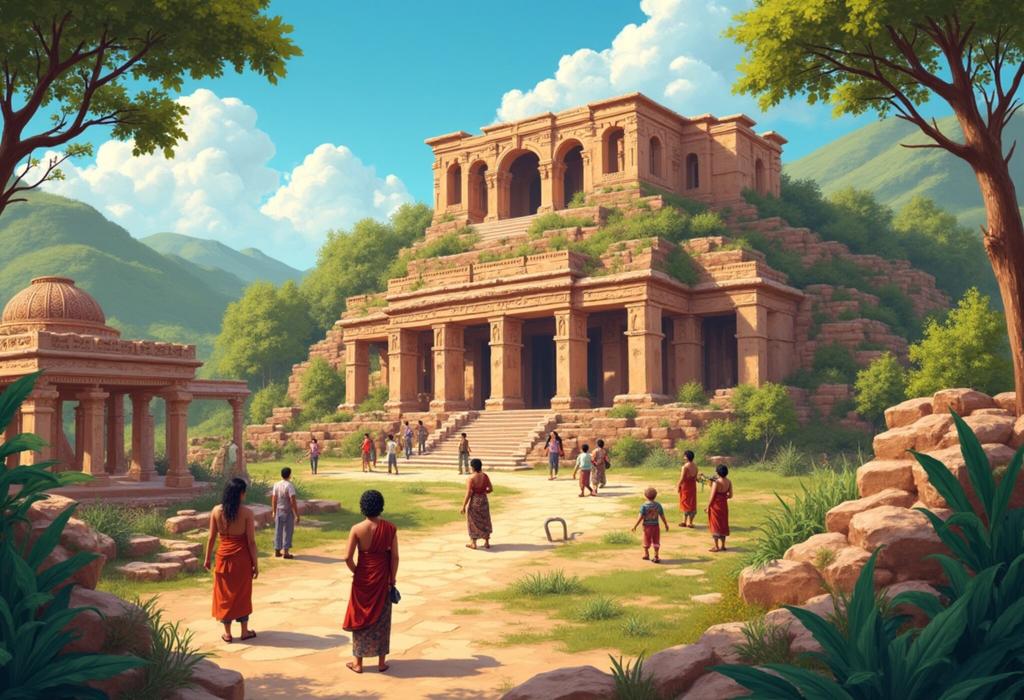For more details on this content, please review the step-by-step guide and frequently asked questions.
The Dark History of Transylvania: Beyond Dracula

Step-by-Step Guide
Understanding Transylvania's Geography
Transylvania, a historical region located in central Romania, is bordered by the Carpathian Mountains to the east and the Apuseni Mountains to the west. Its picturesque landscapes and rich biodiversity provide the perfect backdrop to study its tumultuous past.
Exploring the Prehistoric Settlements
The history of Transylvania dates back to prehistoric times, with archaeological findings indicating habitation as far back as the Stone Age, approximately 40,000 years ago. Neolithic settlements like those in Turdaș showcase early human life in the region.
The Dacian Kingdom
Around 106 AD, Transylvania was the heart of the Dacian Kingdom, a fierce civilization known for its rich mineral resources and warrior culture. The defeat of King Decebalus by the Roman Emperor Trajan led to Roman colonization, marking a significant shift in power.
Roman Influence
Following the conquest, Romanization occurred, influencing local laws, culture, and infrastructure. They established Daco-Roman settlements, and remnants of Roman fortifications can still be seen across Transylvania, such as in Sarmizegetusa.
The Migration Period
As the Roman Empire declined, numerous tribes migrated into Transylvania, such as the Goths, Huns, and Gepids. This period marked instability and conflict as various groups vied for control over the region.
The Hungarian Conquest
In the 11th century, Transylvania became part of the Kingdom of Hungary. The influx of Hungarian settlers contributed to a unique cultural blend, seen in the region's architecture, traditions, and language.
The Saxon Settlements
In the 12th century, the Saxons, invited by the Hungarian king, established fortified towns in Transylvania, such as Sibiu and Brașov. These settlements thrived and became centers of trade and culture, significantly influencing the local economy and governance.
The Ottoman and Habsburg Periods
Transylvania faced invasions from the Ottoman Empire during the 16th century, leading to dependency on the Ottomans while remaining under Habsburg rule. This period introduced religious tolerance and a complex feudal system.
The Rise of the Transylvanian Principality
In the wake of the Ottoman pressure, Transylvania emerged as a principality in the 16th century. It became a cultural melting pot, hosting diverse religious communities, including Catholics, Orthodox Christians, and Protestants.
The Age of Nationalism
The 19th century brought about nationalistic movements, leading to Transylvania's incorporation into Romania in 1920. The aftermath of World War I saw the redrawing of borders, significantly altering Transylvania's demographic landscape.
The Fascist and Communist Era
The rise of fascism and communism in the 20th century ushered in an era of oppression, censorship, and forced migrations in Transylvania. Significant historical events like the Holocaust and the establishment of communist rule have left deep scars on the local population.
Contemporary Transylvania
Modern Transylvania boasts a rich cultural heritage, maintaining traditions of various ethnic groups like Romanians, Hungarians, and Saxons. Today, it is a focal point for tourism, inspired by its medieval castles and Dracula lore, yet its history is much more complex.
Exploring the Myths of Dracula
The infamous character of Dracula, popularized by Bram Stoker’s novel, draws from the historical figure Vlad the Impaler. Analysis of the myths surrounding Dracula highlights how folklore has shaped Transylvania's identity.
Evaluating Historical Impact
It's essential to assess the cultural impact of historical conflicts, migrations, and occupations on Transylvania's modern identity, contributing to its blend of traditions, languages, and beliefs, and how public memory influences current society.
Embracing the Heritage
Understanding Transylvania’s dark history allows for a deeper appreciation of its cultural richness. Events like Folklore Festivals and Historical Reenactments foster cultural pride and educational opportunities that celebrate the region’s diverse heritage.








